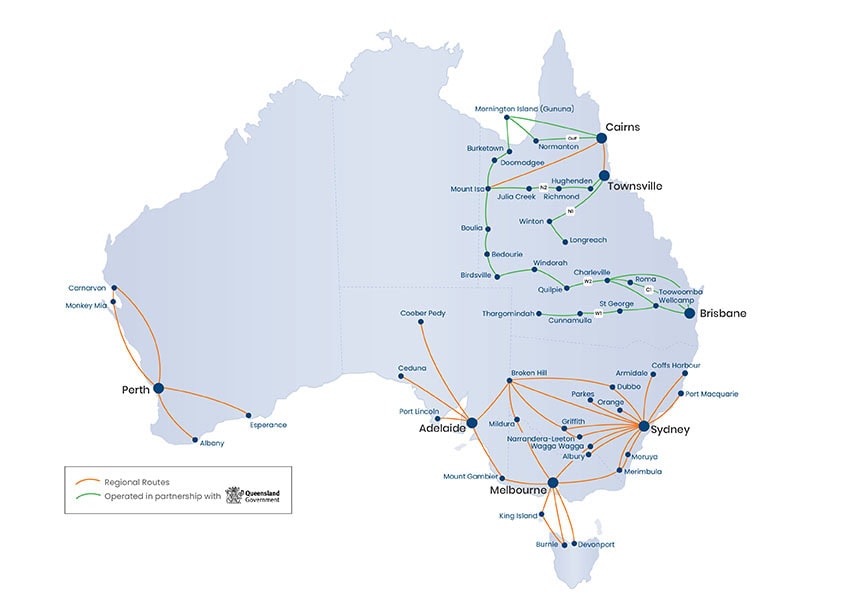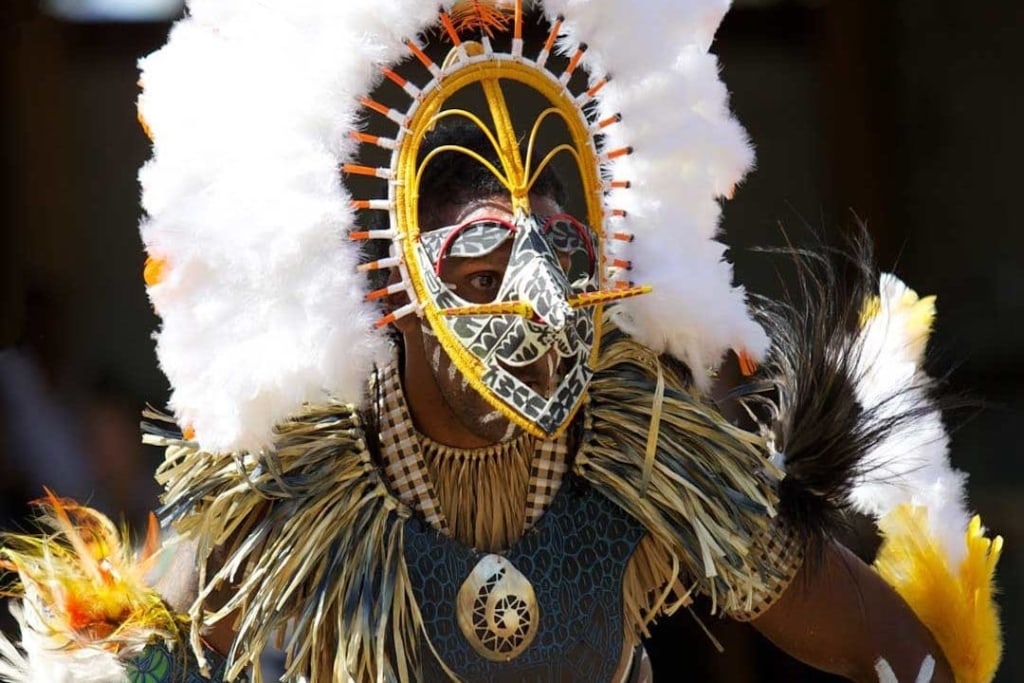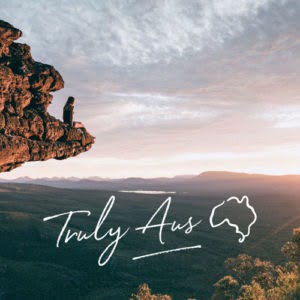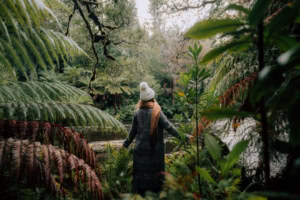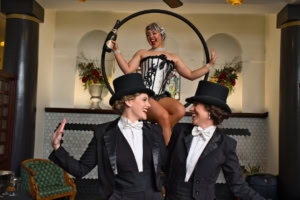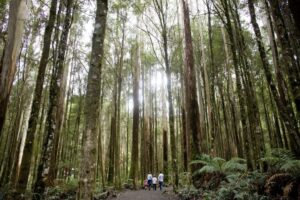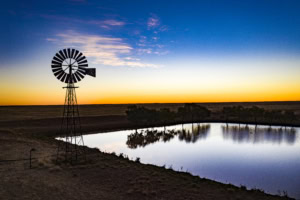Every two years, the magic of Indigenous Australian dance and culture thrusts a small, dusty patch of Queensland’s Cape York Peninsula into the international spotlight with the Laura Dance Festival.
Quinkan Country near Laura, Far North Queensland
There is only one place in the world where every two years, more than 20 Indigenous Australian communities, more than 500 performers and around 5000 visitors unite on sacred Aboriginal ground to celebrate the stories at the heart of Indigenous Australian culture. That place is in Quinkan Country in Far North Queensland, 15 kilometres south of Laura, in the Ang-Gnarra Festival Grounds, and the special event is the Laura Dance Festival.
For Indigenous Australians, the festival is considered a time for families to meet and get to know new and old family members, and it’s a place to meet new people and exchange family histories. It’s also a bubbling hotpot of Indigenous culture where a staggering array of beautifully choreographed dance routines and electrifying performances tell stories that have been passed down through countless generations. Without these performances, into which children as young as three years throw themselves with gusto, many stories crucial to the preservation of Indigenous Australia may have been lost forever.
Driving through Outback Queensland
As 2017 marked 35 years since the festival’s inception in Cooktown, and 25 years of it being held in Laura, we decided it was the year to get out there and relish every moment of it. My friend and I hit the hair-raising snake-like bends and steep inclines of State Route 1 from Cairns to Laura, traversing the mountains of the majestic Daintree Forest. Upon arrival at the festival grounds, police inspect our vehicle to ensure we’re alcohol- and drug-free, as it’s a family-friendly dry event where there is no tolerance for hooliganism. “You girls have a great time, eh? It’ll be hard not to!” one cop says, giving us a big smile as he waves us off.
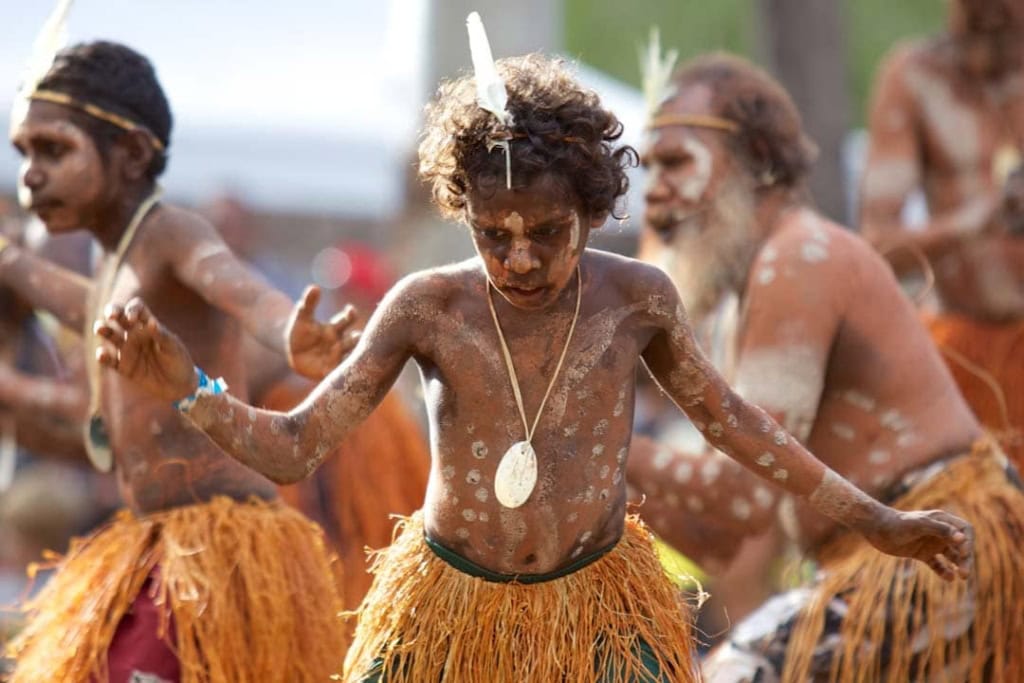
Arriving at the Laura Dance Festival
We squeeze our van into a spot of shade and join the thrumming throng of people heading down a dirt road leading to the festival grounds. Vans and cars packed with people, food and camping gear continue to roll up en masse – there’s high-fiving out windows, people bolting towards one another for hugs, many tears as families and friends re-unite, and many people already dancing down the road in anticipation of the entertainment.
It’s 33 degrees Celsius in winter, the land is dry and red, and the sky is a brilliant blue. But it’s the joy and excitement emanating from the thousands of people which is the most noticeable thing. For three decades the grounds have been transformed into one gigantic camping site, and its obvious that there are many returning visitors. As we walk, tremors tickle our legs – dancers have begun to pound the ground, and as we get closer, we can hear clapping sticks and some goosebump-inducing guttural singing.
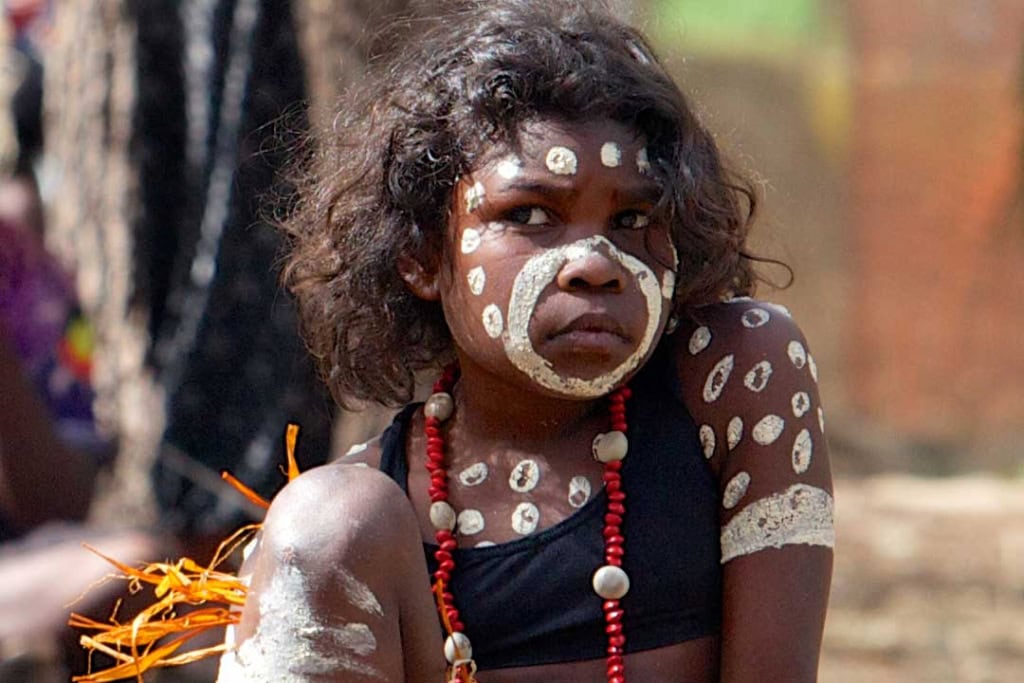
Indigenous dancing at the Laura Dance Festival
The road and gum tree dominated bushland opens up into a dirt arena the size of a few tennis courts, around which thousands of people are crammed, some on picnic blankets and camping chairs, others sitting on the ground. All eyes are pinned on the performers – at this moment, a troupe called Kawadji Wimpa from Lockhart River. Their bare upper bodies are decorated with looping streams of white and red painted dots, and they wear long grass skirts, under which their legs move so quickly, so rhythmically, that it’s all a dazzling blur. And all around them, and across the entire audience, dust flies up to create a hazy mist-like veil spliced by piercing midday sunrays.
It’s hard to tear yourself away from the dancers – every half hour for a full three days, a new troupe with a series of performances takes the stage – but the educational stands circling the ‘dance floor’ are as fascinating as the many tribes celebrating their unique culture.
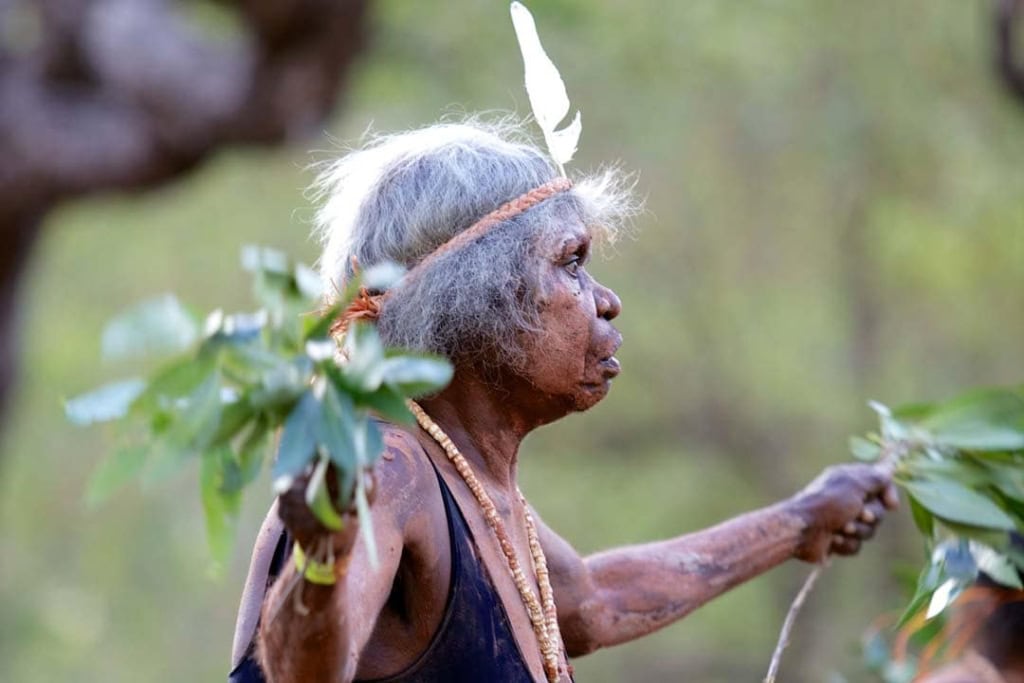
Laura Dance Festival stalls
We wander. At one stall, a woman is pulling plastic human organs out of a replica human torso and speaking to a group of grinning, giggling kids and teens. Next door there’s a young woman with a pile of apples, wielding a fancy peeler that cores the apple and creates a long twist of fresh fruit for the queue of kids eagerly awaiting a healthy treat. And behind it all, at a stand bursting at the seams with kids, is a quiz board about the food groups and their health benefits. If the kids get all of the questions right, they’re given a showbag packed with cartoon books about health and wellbeing, some toothpaste and a toothbrush, and a skipping rope.
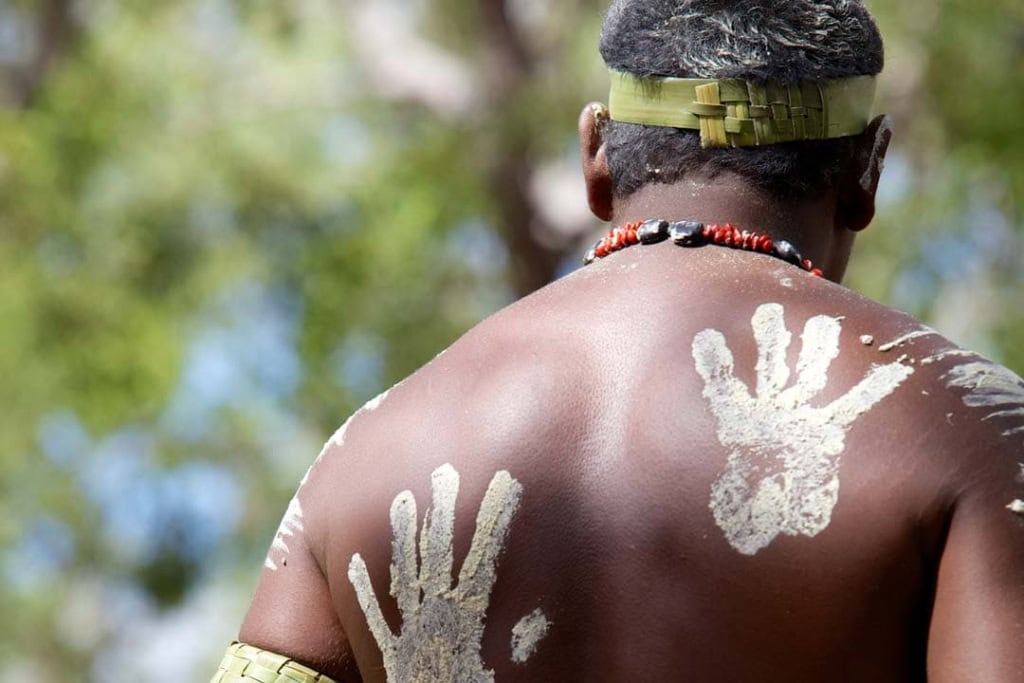
Keeping Our Culture Alive (KOCA)
At another stand I meet Tricia Walker of the Yidinji people, who teaches her visitors how to make dilly bags (traditional gathering pouches) and sun hats woven from lomandra grass. She works for Keeping Our Culture Alive (KOCA), collaborating with master weavers to teach people how to make things while educating them about her ancestors’ way of life.
“The kids love making something from nature, and then we can teach them about our people and how they once lived. We have to keep our culture alive, and that comes down to educating the young ones.”
When the festival launched 35 years ago, the stands were not a part of the event – it was all about the dance troupes. Waratah Nichols, a British woman who arrived on the Cape as a backpacker back then, fell in love with the place and the communities, and never went home.
“Laura Dance Festival is incredibly important, as we need to have experiences that bring us back to earth,” she says. “Modern society and a growing obsession with technology has taken us so far from what is real.” She pauses. “This (she spreads her arms wide to take in the festival) is as real as you get. It’s incredible, and everyone who comes here is moved by what’s happening. It’s the past, being kept alive through human energy and people’s stories.”
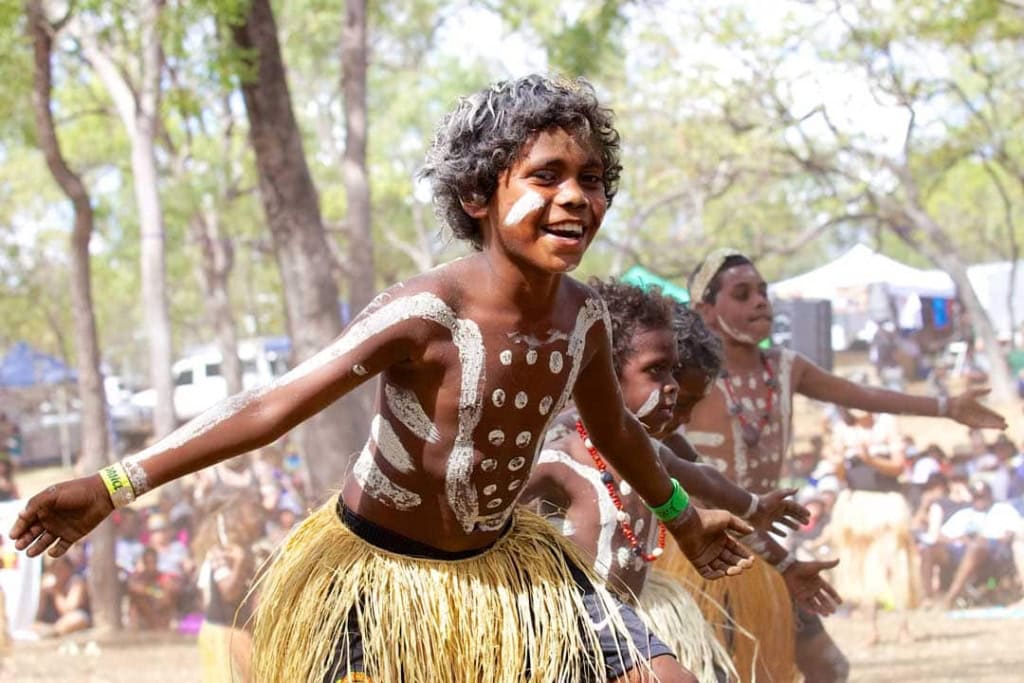
Connecting with Country at Laura Dance Festival
Watching the faces of the dancers, and seeing their nimble limbs move so quickly, fervently, to convey the intensity of the meanings behind the music, sends shivers through my body. The beats reverberate through me, so it’s not just my ears doing the work. The moves, the music and the energy shakes and wakes the soul.
There’s a little girl with a cheeky smile in a simple red cotton top, who must be about four years old. I stand on the side of the crowd and watch her smiling through the curtains of dust as her spindly legs somehow move neatly yet wildly, her straw skirt shaking as her rapid-fire ambidextrous movements take her to some other place. She’s surrounded by her loving clan, she’s so proud that she’s shining. Drums, and now a hauntingly beautiful female elder’s voice has reached such a crescendo that the crowd is staring like one huge creature with thousands of eyes and rows of gaping mouths, oblivious to the dust that’s been whipped into a whirlwind by the theatrical frenzy.
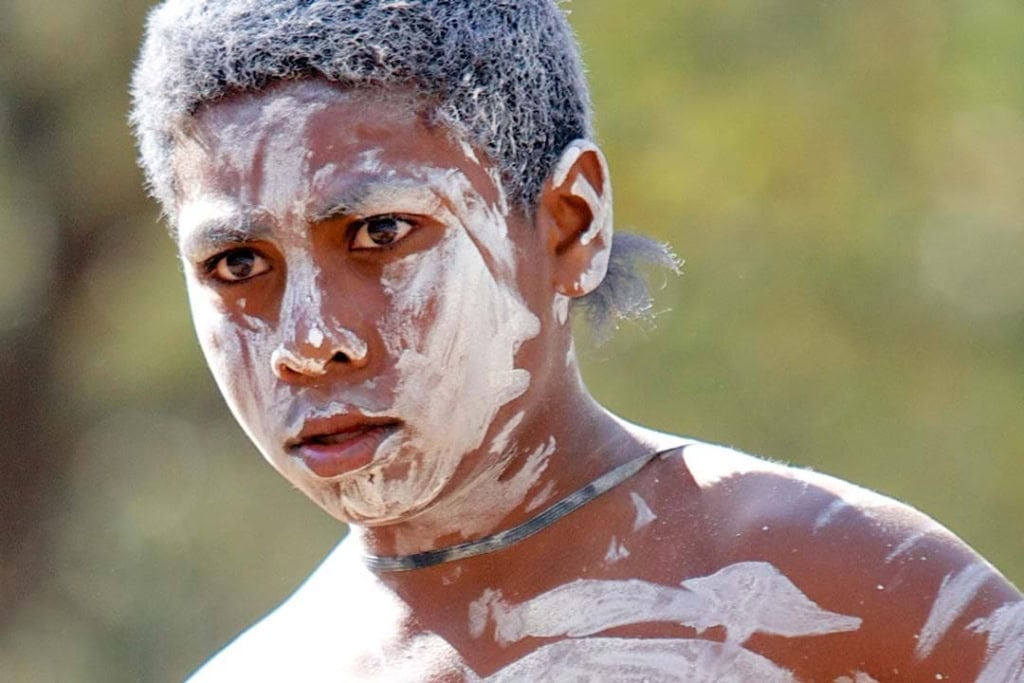
As each dance finishes, often with a dizzying high, the crowd stares at the dancers. And the dancers stare back – their ancestors right there in their faces. They are pure portraits of the past. And then, after each troupe files off, minutes later, the ground begins to tremble again – it’s like the ancestors of these people are reaching up and out to them from within the Earth. The dust is like spirits rising from their Country. Goosebumps, and even tears, are hard to avoid, because it’s like seeing magic in action. Magic passed down through families for millennia. Anyone who experiences this kind of magic, is more than just privileged – they’re downright blessed.
For more on Indigenous culture, check out this list of the best Indigenous experiences around the country.
